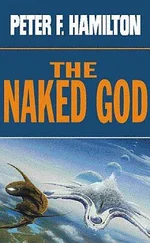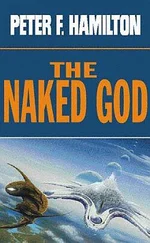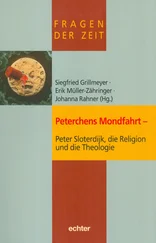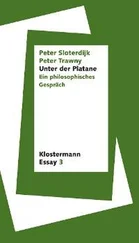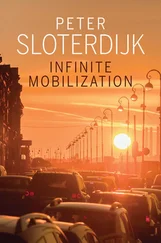The majorities, which remain in their world childishness, count on the fact that God for the most part does not see them. Like Tartuffe, they think that anything that is not seen is not a sin. The god of the people is to be exempted from the burden of having to register everything in his logbook. Since time immemorial, the people has therefore voted for the oblivion of being – that is, for the obfuscation of the presence of constant scrutiny from both within and without. Nor has the people ever warmed up to the clerical elites’ attempt to enforce permanent self-control through universal confession. By contrast, those spiritual minorities that have been seized by the revolution in the world picture [ Weltbil d ] feel overwhelmed by the lofty suggestion that they produce themselves relentlessly in the face of a super-clairvoyant observer. 13
2.2 And they saw that it was not good
In what follows, let us hold fast to the assumption that the altered mode of human existence in high cultures can be explained as a result of the increasing stress placed on human beings by the idea of permanent external scrutiny. This state of affairs is reflected in a risky compulsion toward self-scrutiny – risky because chronic attention to one’s inner states can mark a stage on the path to discovering one’s own nothingness. When such a path is followed to the end, it leads almost inevitably to the misery of self-rejection. Individual experimenters have managed to traverse the entire stretch and put down their results in writing, as doctrines of wisdom. Later guides of the soul built on their predecessors by claiming that not liking oneself is the beginning of salvation. Still in 1843, Kierkegaard was able to reason in a sapient–depressive tone about “[t]he upbuilding in our always being in the wrong in relation to God.” 14
Against this background we can ask how it was possible for a young man, laden with complexes, bearing the name Martin, christened after the patron saint of wayfarers and horsemen – how it was possible for this man to feel so fiercely lost in angst and misery as to release himself from his previous, “worldly” modus vivendi after the crisis of the legendary storm in Stotternheim in July 1505. Obviously, being a twenty-two-year-old at the time, he belonged in a cultural context in which renouncing one’s belonging to the “world” had long been available as an established option. What was called religio at the end of the Middle Ages was identical with the offer to immigrate, in the midst of the world, to a counterworld. The counterworld existed as a spiritual “estate” with its own autonomy vis-à-vis worldly estates. On the basis of his accomplishments as a creator of metaphysical legitimacy, the “cleric,” that is, the ordained elite of the visible church, knew how to reserve the rank of the highest estate for himself – above the nobility, the bourgeoisie, and the peasants. (Let me note that, in their day, estates, as degrees of status in the social realm prior to political states, obeyed the imperative to create livable arrangements within segmental societies by means of hierarchization.)
To the extent that Martin Luther’s despair was bound up with a western-style world denial that could be encoded in high culture, we can see him as a distant heir of the exaltations and overshadowings of the axial age. Already in his era, the monastic topos of contemptus mundi [disdain for the world] served as leitmotif in an immeasurable body of literature. To write contemplative books and at the same time not to have contempt for the world: that was almost a matter of impossibility at the beginning of the modern age, namely before Boccaccio. The modern intellectual does not originate in the Dreyfus affair. He emerges from the fourteenth-century literature against being dependent on a world that could not be affirmed. 15An unhappy consciousness is embodied in this individual. He knows how much the world deserves contempt, yet he remains bound to the contemptible through his striving for fame ( gloria ) and search for love ( amor ). 16
The young monk Luther learned through his own experience that evading the worldly sphere by entering into cloistered counterworldliness was not qualified to brighten up the disgruntled mood of his existence. It did not matter what he read, whether it was the rather sympathetic mysticism of the Theologia Deutsch or Aristotelian ethics, which was distasteful to him owing to its lack of contrition; it was only through the serious climate of a religio behind cloister walls and the passion he felt from his engagement with contemporary theology (namely that of the Augustinian persuasion) that his youthful disorientation was able to mutate into a systematically grounded metaphysical despair. If up to that point the adolescent Martin had experienced the drama of the lost and unloved child, the young monk and theologian Luther – doctor theologiae since 1512 and professor at the young regional University of Wittenberg since 1514 – now developed into an exorbitant case of high-culture eccentrification: as he attempted to compose himself coram deo [before God], the unfathomable extent of his lostness came undone.
*
The Augustinian term peccatum originale [original sin] – in German Erbsünde [inherited sin] – summarizes this state of affairs as an anthropological urfact, without making reference to the individual case. In looking inward, the young monk experienced himself as the object of a transcendent scrutiny. Under its effects, he is at first unable to do anything other than petrify into a statue of despair.
Luther’s early spiritual struggles carry the echo of the supremacy of 2,500 years of denying the world and life. This supremacy was defended by the bizarre, always renewable band of ascetics, hermits, penitents, self-dissolvers, dolorists, flagellants, and other character masks of holy extremism. In their ranks we find remote figures such as Gautama Buddha, whose basic saying sarvam dukha – “everything is full of suffering” – resonates throughout more than 2,000 years. Among them we must also count the Greek Silenus, with his tragic piece of wisdom according to which the best thing for human beings would never to have been born and the second best is to die soon. The greater age of anxiety 17includes the lamentations of Job and the discourses of the preacher Solomon, the apocalypticism of the Near East and the tears of Augustine; it extends from the zenith of world denigration – which was reached by Lotario di Segni (1160–1216), 18the future Pope Innocent III (from 1198 on), in his treatise De miseria humanae conditionis [ On the Misery of the Human Condition ], composed in 1189 – to the nadir of philosophical resignation in Schopenhauer’s doctrine of the denial of the will to live. They all contradict God’s self-praise at the end of each day of creation: they see that for the most part it was not good, and at no time was it valde bonum – very good. With the “breakthroughs” of the axial age, the scope of the denial grows alongside the affirmations.
Within this darkened space, every instance of despair is related to all the others; for millennia, the despisers of the world and of their own world-proximate selves live simultaneously: “Every human being is Job.” 19We are all subject to turpe naturale [what is natural and base] and must continue to pay tribute to the abomination of being caught up in bodily necessities. The sayings of the desert fathers reverberate in the Russian love of beauty; the agony of Golgotha echoes again in devotio moderna [the modern devotion]. It is no accident that the penitential struggles of the young Luther are so directly connected to the salvational uncertainty of the old Augustine that it is as though eleven centuries did not lie between them.
Читать дальше






